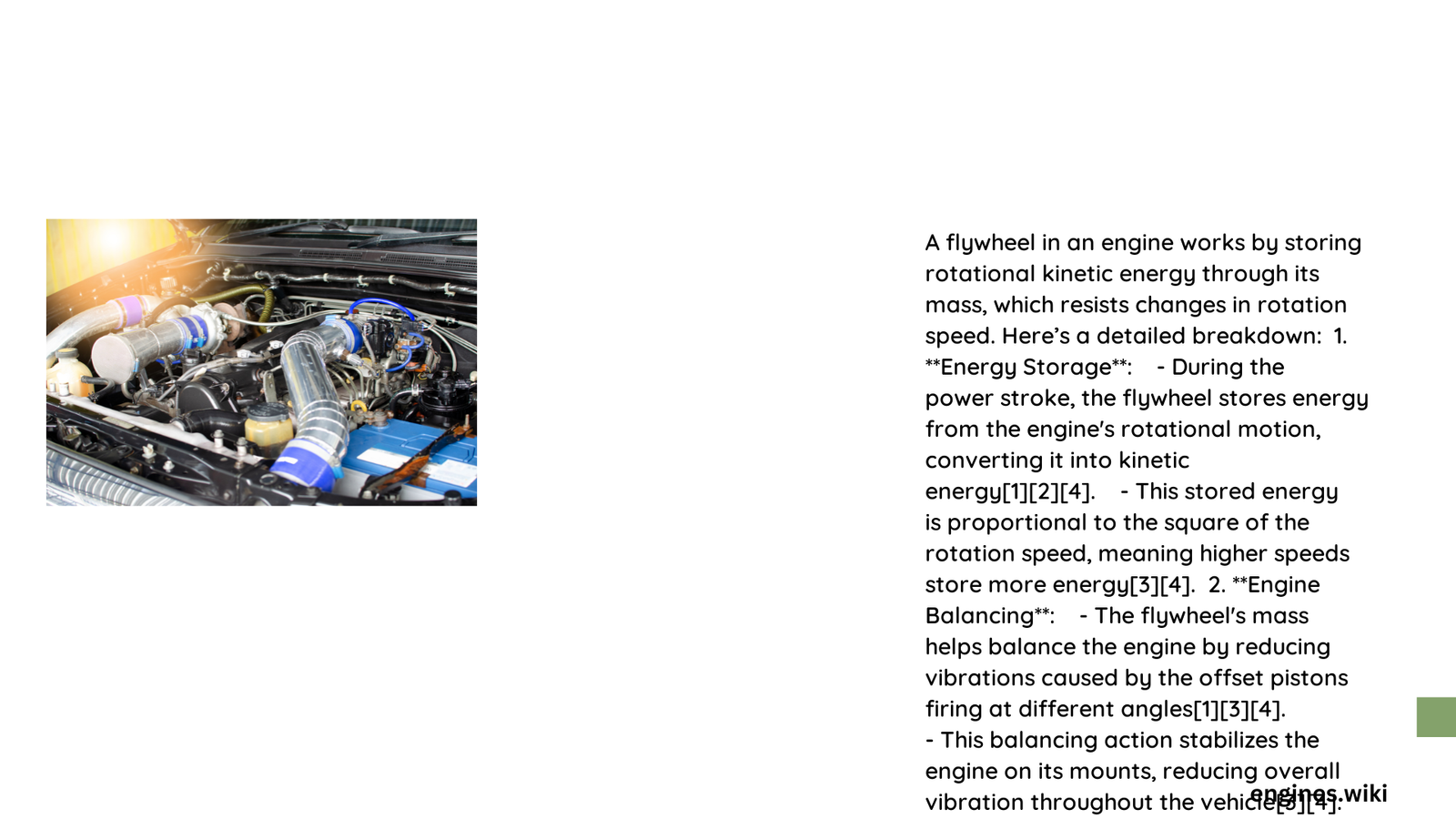A flywheel is a critical mechanical component in internal combustion engines that stores rotational energy, stabilizes engine speed, and smooths power delivery through its massive rotating mass. By converting intermittent piston motion into continuous rotational energy, the flywheel acts as a dynamic energy reservoir, absorbing and releasing power to maintain consistent engine performance across different operational conditions.
What Is the Primary Function of a Flywheel?
The flywheel serves multiple crucial functions in an engine’s mechanical system. Its primary responsibilities include:
Energy Storage and Momentum Management
- Rotational Inertia: Stores kinetic energy during power strokes
- Speed Stabilization: Maintains consistent engine RPM
- Vibration Dampening: Reduces mechanical oscillations
- Torque Smoothing: Balances power delivery between combustion cycles
How Does Flywheel Capture and Release Energy?
Mechanical Energy Conversion Process
- Power Stroke Acceleration
- Pistons generate sudden rotational force
- Flywheel absorbs excess energy
-
Stores momentum through rotational inertia
-
Energy Release Mechanism
- Releases stored energy during low-power engine cycles
- Maintains consistent crankshaft rotation
- Prevents speed fluctuations
What Determines Flywheel Performance?

Critical Design Parameters
| Parameter | Impact on Performance |
|---|---|
| Mass | Higher mass = More energy storage |
| Radius | Larger radius increases moment of inertia |
| Material | Determines strength and energy retention |
| Thickness | Influences rotational dynamics |
Calculation of Flywheel Energy
The energy stored in a flywheel follows the formula:
[ E = \frac{1}{2} I \omega^2 ]
Where:
– ( E ) = Stored Energy
– ( I ) = Moment of Inertia
– ( \omega ) = Angular Velocity
What Challenges Affect Flywheel Efficiency?
Technical Limitations
- Material Stress Constraints
- Maximum tensile strength limitations
- Risk of structural failure at high rotational speeds
-
Potential for catastrophic disintegration
-
Manufacturing Considerations
- Precision balancing requirements
- Complex machining processes
- Cost of high-performance materials
What Are Advanced Flywheel Technologies?
Modern Engineering Approaches
- Composite material construction
- Computer-aided design optimization
- Precision-balanced rotating assemblies
- Advanced stress analysis techniques
Practical Applications and Performance Implications
Performance Characteristics
- Automotive Engines
- Smooth power transmission
- Reduced mechanical vibration
-
Enhanced driving comfort
-
Industrial Machinery
- Consistent rotational energy
- Improved mechanical efficiency
- Reduced wear on transmission components
Conclusion
Flywheels represent a sophisticated mechanical solution for managing rotational energy in engines, bridging the gap between intermittent combustion events and continuous power delivery.
